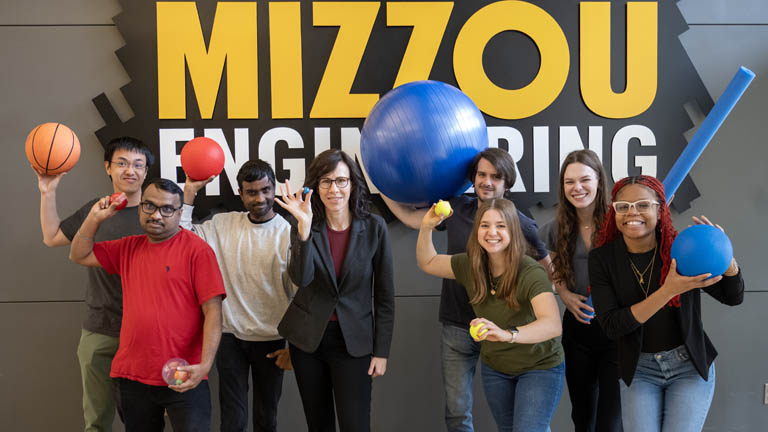March 30, 2025
Mizzou researcher employs new technology to track molecules’ movement inside bacterial cells in interinstitutional study.

Researchers are actively exploring ways to use bacteria’s versatility and biocompatibility to develop treatments for cancer and infections. Now, the work of a Mizzou Engineering has brought those treatments one step closer to reality.
A new study published in the prestigious Proceedings of the National Academy of Sciences offers a new way of thinking about how molecules move inside cells, giving us insights into how to engineer bacteria for therapeutic purposes.
Dr. Roseanna Zia, Dave Wollersheim Professor of Mechanical and Aerospace Engineering, is the senior author of the study, “Macromolecular interactions and geometrical confinement determine the 3D diffusion of ribosome-sized particles in live Escherichia coli cells.” The work is a collaboration among researchers from Harvard, Stanford, Mizzou, New York University, Princeton and Vanderbilt. Dr. Alp M. Sunol of Harvard initiated the research and is Zia’s former PhD student.
Predicting molecular movement
The inner workings of bacteria are complex.
“The inside of a bacteria, particularly E. coli, is a crowded environment of thousands of biomolecules whizzing around like crazy,” Zia said. “It’s like the worst game of dodgeball ever, with basketballs, baseballs, water balloons, marbles, etc. all moving incredibly fast in random directions.”
Most cell models try to capture the chaos with map-like diagrams. But Zia’s lab builds detailed computational models of the cell interior, collaborating with the Shaevitz Laboratory at Princeton, which performs close-up experiments on the inside of bacteria.
Mizzou and Princeton recently joined forces to track how biomolecules move inside the most crowded part of the cell: the DNA. While Dr. Joshua Shaevitz developed a novel technique to track fluorescent particles into regions previously inaccessible, Zia’s lab created models predicting this motion and guiding new experiments to test how it can control gene expression.
“Molecules will deliver a message to a gene to make proteins, for example, to protect the cell which then migrate out again to translate those proteins,” Zia said. “We are building models where we can watch this as it happens, which has revealed new mechanisms in how cells operate.”

The team solved two mysteries that had puzzled earlier researchers: First, molecules seemed to be separating into different parts of the cell, and second, their movement was unusual.
“We found that entropic [size-based] and electrostatic [charge-based] mechanisms were segregating the molecules into specific regions,” Sunol said. “The unusual movement was explained by the cell’s actual shape and structure, and how this helps DNA trap the molecules.”
Zia and her co-authors are one of only a few teams in the world on a quest to build a physics-based model of whole bacterial cells.
“A physically- and chemically accurate, self-replicating whole-cell model is the ultimate goal,” Zia said. “If we can understand how bacteria work at the molecular level, we can engineer them for medical applications, such as fighting infections or treating cancer.”
Push the boundaries of discovery. Choose Mizzou Engineering!